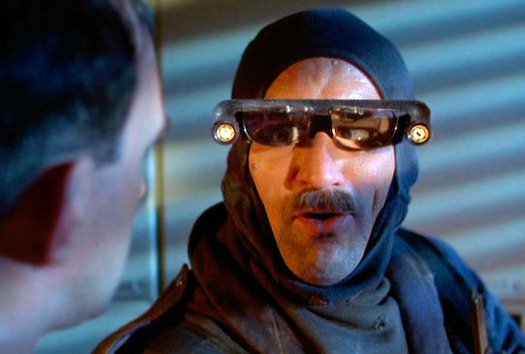Smart Cities: Buggy and Brittle

Calafia Café in Palo Alto is one of the smartest eateries in the world. With Google’s former executive chef Charlie Ayers at the helm, the food here isn’t just for sustenance. This is California — eating is also a path to self-improvement. Each dish is carefully crafted with ingredients that not only keep you slim, but make you smarter and more energized too. A half-dozen venture capitalists pick at their dandelion salads. A sleepy suburb at night, by day Palo Alto becomes the beating heart of Silicon Valley, the monied epicenter of the greatest gathering of scientific and engineering talent in the history of human civilization. To the west, across the street, lies Stanford University. The Googleplex sprawls a few miles to the east. In the surrounding region, some half-million engineers live and work. A tech tycoon or two wouldn’t be out of place here. Steve Jobs was a regular.
Excusing myself to the men’s room, however, I discover that Calafia Café has a major technology problem. Despite the pedigree of its clientele, the smart toilet doesn’t work. As I stare hopefully at the stainless steel throne, a red light peering out from the small black plastic box that contains the bowl’s “brains” blinks at me fruitlessly. Just above, a sign directs an escape path. “If sensor does not work,” it reads, “use manual flush button.” And so I bail out, sidestepping fifty years of progress in computer science and industrial engineering in the blink of an eye.
Back at my table, I try to reverse-engineer the model of human-waste production encoded in the toilet’s CPU. I imagine a lab somewhere in Japan. Technicians in white lab coats wield stopwatches as they methodically clock an army of immodest volunteers seated upon row after row of smart johns. The complexity of the problem becomes clear. Is it supposed to flush as soon as you stand up? Or when you turn around? Or pause for a fixed amount of time? But how long? Can it tell if you need another flush? It’s not quite as challenging an engineering task as putting a man on the moon, or calculating driving directions to the airport. Somehow, though, that stuff works every time.
My bewilderment quickly yields to a growing sense of dread. How is it that even in the heart of Silicon Valley it’s completely acceptable for smart technology to be buggy, erratic, or totally dysfunctional? Someone probably just cured cancer in the biotechnology lab across the street and is here celebrating over lunch. Yet that same genius will press the manual flush button just as I did, and never think twice about how consistently this new world of smart technology is letting us down. We are weaving these technologies into our homes, our communities, even our very bodies — but even experts have become disturbingly complacent about their shortcomings. The rest of us rarely question them at all.
I know I should stop worrying, and learn to love the smart john. But what if it’s a harbinger of bigger problems? What if the seeds of smart cities’ own destruction are already built into their DNA? I’ve argued that smart cities are a solution to the challenges of 21st-century urbanization, that despite potential pitfalls, the benefits outweigh the risks, especially if we are aggressive about confronting the unintended consequences of our choices. But in reality we’ve only scratched the surface.
What if the smart cities of the future are buggy and brittle? What are we getting ourselves into? Read more.
Originally published on Places Journal by Anthony Townsend.
Image: Robert De Niro as renegade smart-city hacker Harry Tuttle in Brazil (1985).